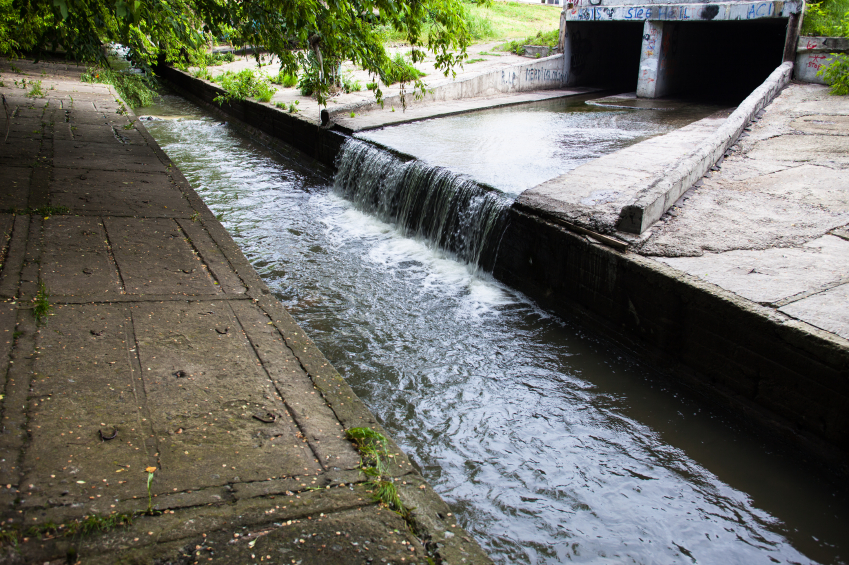
|
First, a little background
Stormwater is water from rain or melting snow that doesn’t soak into the ground but runs into waterways and most often carries pollutants from things like roofs, paved areas, and bare soil. There are federal, state, and municipal regulations all revolving around controlling stormwater runoff.
Facilities are most likely required by municipal ordinances to control the flow of stormwater from their property. Types of best management practices (BMPs) that are often required include regular property maintenance such as sweeping and cleaning out catch basins and retention ponds. In addition, many cities that are regulated under the municipal separate storm sewer system(MS4) program have developed local stormwater regulations in order to meet their own permit requirements.
The U.S. Environmental Protection Agency (EPA) has been promoting the use of green infrastructure (GI) as a viable way to control stormwater. Your municipality may be all over that. We will look at some ways you can incorporate GI at your facility to meet local requirements and/or promote goodwill.
Join us on Tuesday, November 3, for our in-depth webinar, Capitalizing on LEED v4: New Indoor Environmental Strategies for Sustainable, Cost-Saving Operations and Maintenance
 |
There may be money available. Companies located in municipalities that have incentives to develop new, more ecological, systems have an advantage when considering greener solutions. Be sure to check with your municipality for any available funding for GI initiatives.
Green infrastructure you could use
GI uses vegetation, soils, and natural processes to manage water. At the scale of a city or county, GI refers to the patchwork of natural areas that provides habitat, flood protection, cleaner air, and cleaner water. At the scale of a site, such as your facility, GI refers to stormwater management systems that mimic nature by soaking up and storing water.
Here are some GI techniques that could work on a site/facility level.
Downspout disconnection. This is simply the rerouting of rooftop drainage pipes to drain rainwater to rain barrels, cisterns, or permeable areas instead of the storm sewer. Downspout disconnection stores stormwater and/or allows stormwater to infiltrate into the soil.
Rain gardens. These are shallow, vegetated basins that collect and absorb runoff from rooftops, sidewalks, and streets. Rain gardens mimic natural hydrology by infiltrating and evapotranspiring (i.e., evaporation from surfaces and water vapor given off by plants) runoff. Rain gardens can be installed in almost any unpaved space and can be almost any size.
Planter boxes. Planter boxes are urban rain gardens with vertical walls and open or closed bottoms that collect and absorb runoff from sidewalks, parking lots, and streets. Planter boxes are ideal for space-limited sites in dense urban areas and as a streetscaping element.
Join us on November 3 to find out how to incorporate common-sense strategies into your operations pursuant to LEED v4, the world’s premier benchmark for high-performing green buildings. Click here to learn more!
Here’s where we may be talking some money but don’t forget to check with your town for possible funding help. If you need to or just plan to replace the parking lot or the roof at your facility, here are a few GI features that could work for you.
Bioswales. Bioswales are vegetated, mulched, or xeriscaped (i.e., landscaping that reduces the need for supplemental irrigation) channels that provide treatment and retention as they move stormwater from one place to another. Vegetated bioswales slow, infiltrate, and filter stormwater flows. Vegetated bioswales are particularly suitable along streets and parking lots. Bioswales can be included along a parking lot perimeter.
Permeable pavements. These are paved surfaces that infiltrate, treat, and/or store rainwater where it falls. Permeable pavements may be constructed from pervious concrete, porous asphalt, permeable interlocking pavers, and several other materials. These pavements are particularly cost-effective where land values are high and where flooding or icing is a problem.
Green roofs. Green roofs are covered with vegetation that enables rainfall infiltration and evapotranspiration of stored water. Green roofs are particularly cost-effective in dense urban areas where land values are high and on large industrial or office buildings where stormwater management costs may be high.
